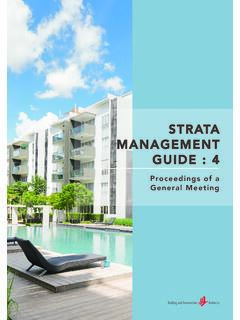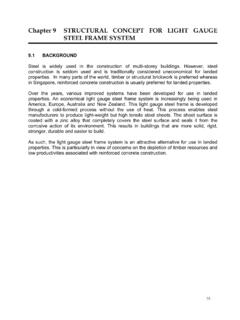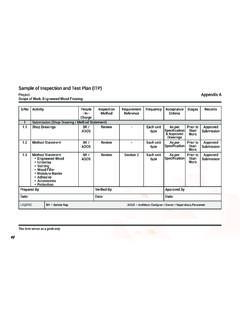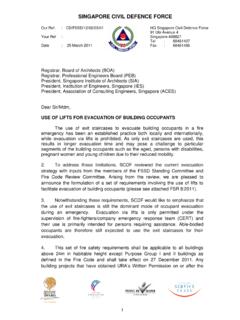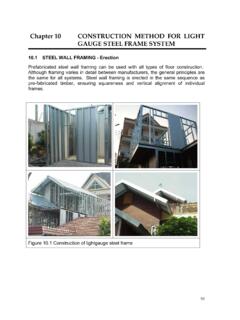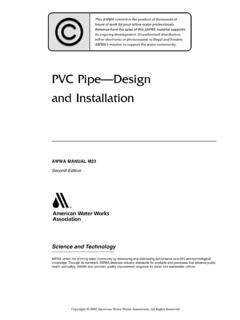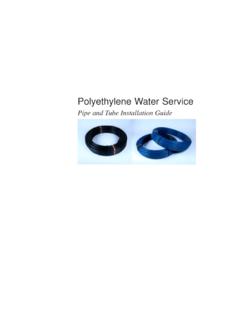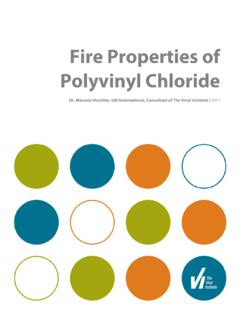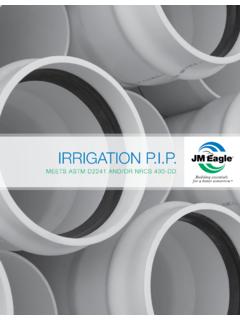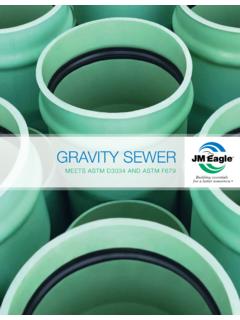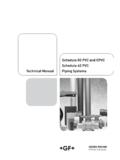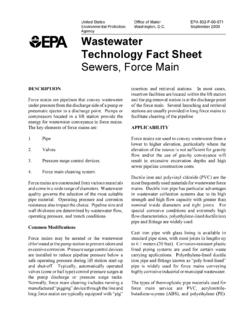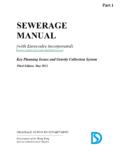Transcription of WATERPROOFING OF REINFORCED CONCRETE FLAT ROOF
1 87 WATERPROOFING OF REINFORCEDCONCRETE FLAT ROOF1288 GOOD INDUSTRY PRACTICES12 WATERPROOFING OF REINFORCED CONCRETE FLAT BACKGROUNDMost roofs in Singapore are constructed using REINFORCED CONCRETE which is known to have pores or capillary tracts. Depending on the designed strength, density and installation techniques, the number of pores can vary. These pores are interconnected within the CONCRETE and water will penetrate through such capillary tracts aided by osmotic is known to be inherently weak in tension; cracks and voids can also form due to thermal expansion, contraction and shrinkage.
2 As a result, water will seep through these voids. Therefore, WATERPROOFING is required to keep the roof water-tight since they are exposed to the DESIGN AND CONSTRUCTION OF FLAT ROOFThe proper design of falls in a flat roof is an essential consideration in the overall drainage of the roof. Falls create flow paths to direct the drainage of rain-water away from the roof to suitable discharge points. To be effective, it is essential to clear surface water as rapidly as possible from the flat roof to avoid ponding or stagnation of water on the roof on a flat roof is a prime cause of deterioration because variations in temperature between wet and dry areas of the roof can cause differential thermal movement.
3 Together with the accumulation of acids left by evaporating rain, this would cause a breakdown on the roof surface. In general , a minimum fall of 1 in 80 will help to prevent ponding of water. During construction, precautions must be taken to prevent excessive moisture from being trapped between the REINFORCED CONCRETE roof structure and membrane. This is one of the common causes of flat roof WATERPROOFING failure. Large amount of water vapour can evaporate from REINFORCED CONCRETE or a wet screed. Once the WATERPROOFING membrane is laid, drying out of the structural slab will mostly take place from the underside of the deck.
4 Cross ventilation beneath the deck is usually quite restricted due to erected partition walls. Any trapped moisture subjected to increased temperature from the sun will form vapour which will exert itself directly beneath the WATERPROOFING membrane. If this vapour pressure is not released or vented sufficiently, the build-up pressure will begin to form a blister on the membrane itself and residual dampness on the underside of the roof. When the WATERPROOFING membrane has suffered an irreversible stretch, subsequent cooling will not cause the air pocket to return to its original size.
5 Therefore, if a dry surface cannot be achieved within a reasonable period of time, direct membrane adhesion should be postponed or an alternative method of laying should be ROOF MEMBRANE SYSTEMSThe WATERPROOFING membrane is considered to be most important component of the roofing system as it serves the main function of keeping water out of the building. Below are some common roof WATERPROOFING membranes used locally:a. Liquid-applied membranesLiquid-applied membranes are applied on site in a liquid form which is allowed to set and form into a water impermeable membrane.
6 Bituminous-based (except those containing coal tar) and polymeric-based membranes can be applied when they are cold while those containing coal tar are usually applied when heated. Liquid-applied membranes are seamless, semi-flexible, easy to apply, detail, maintain and repair. However careful supervision and control during application is needed, particularly in ensuring proper curing of CONCRETE , consistent thickness and uniform Application of liquid-applied membrane using b. Pre-formed sheet membranesOne type of pre-formed membranes is the polymer-modified bitumen membranes and they are applied by heat or attached with an adhesive.
7 These blended or modified asphaltic product are bonded to a high strength fabric of polyester or fiberglass and produced into rolls. They have elongation and recovery properties which make them suitable to protect against stresses created by wind, temperature fluctuation and normal structural expansion and contraction of the building. Some of these products are also modified to increase their resistance to fire, thus increasing their fire-rating. Styrene-butadiene-styrene (SBS) rolls are modified with 'rubbers' and compatible with petroleum products.
8 Atactic Polypropylene Polymer (APP) rolls are modified with 'plasticizers' and not compatible with all petroleum-based products, grease and Softening polymer-modified bitumen membrane by heat type of pre-formed membrane is made of polyvinyl chloride (PVC). Although PVC is a hard resin, it is modified with the addition of plasticisers to make it more supple and pliable for use as roofing membranes. PVC membranes are mainly produced by either the calendering or extrusion process. In the calendering process, a reinforcement layer of glass fibre or polyester scrim is normally incorporated into the membrane to provide greater strength and dimensional stability.
9 Like all thermoplastic membranes, they turn soft when subjected to heat. Some proprietary membranes are formulated with heat reflective compounds capable of lowering the surface temperature of the roof membrane by as much as 15%.Fig. Using hot air torch to weld the joint of PVC GOOD INDUSTRY GOOD DETAILING PRACTICES FOR LIQUID-APPLIED MEMBRANESAs liquid-applied membranes are not very elastic and do not bridge over cracks and gaps well, it is good practice to fix a lax bitumen membrane over building s expansion and movement Typical example of fixing bitumen membrane over building s expansion and movement GOOD DETAILING PRACTICES FOR PRE-FORMED MEMBRANES Along roof edges and parapets, corners and pipe penetrations.
10 A minimum 25 mm chamfer or fillet should be provided to ensure a smooth contour for easy installation of the membrane. This fillet helps to reduce the bending stresses in the membrane as compared to bending it at 90 without the 25 mm fillets along parapet wall for bitumen and PVC membrane. Along edges, upstands, and vent pipe penetrations, the bitumen membrane is normally extended at least 150 mm above the finished roof level and doubly wrapped with appropriate overlapping at corners. It is good practice to form a groove on the parapet wall so that the edge of the bitumen membrane can be tucked into the groove.
